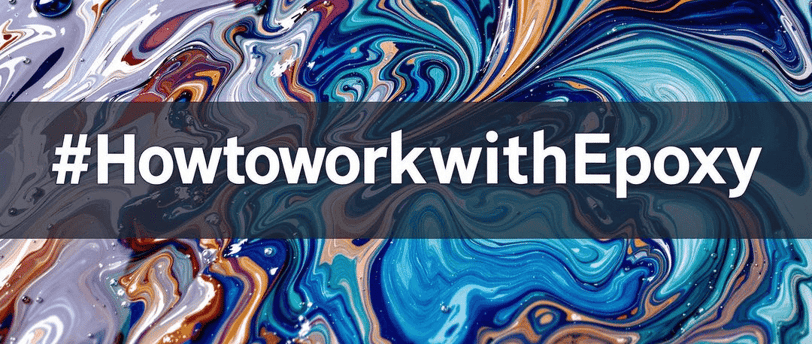The Best DIY Resin Epoxy Project: Creating Beautiful, Affordable Resin Coasters
Resin epoxy art has quickly become one of the most popular DIY crafts, thanks to its versatility and the stunning, high-quality results it produces. Whether you're a beginner looking to try something new or an experienced crafter hoping to add a fresh project to your list, resin art provides endless possibilities. If you're looking for a simple, affordable, and creative DIY resin epoxy project, making resin coasters is one of the best choices.
Certified Epoxy Reviews
5/8/20246 min read


The Best DIY Resin Epoxy Project: Creating Beautiful, Affordable Resin Coasters
Resin epoxy art has quickly become one of the most popular DIY crafts, thanks to its versatility and the stunning, high-quality results it produces. Whether you're a beginner looking to try something new or an experienced crafter hoping to add a fresh project to your list, resin art provides endless possibilities. If you're looking for a simple, affordable, and creative DIY resin epoxy project, making resin coasters is one of the best choices. Not only is it budget-friendly, but it’s also a fun and rewarding project that will leave you with beautiful, personalized home décor. In this blog post, we’ll explore why resin coasters are the perfect DIY resin epoxy project and walk you through the process step by step.
Why Resin Coasters Are the Best DIY Resin Epoxy Project
Before diving into the project itself, let's talk about why resin coasters are such a great choice for a DIY resin epoxy project. From their low cost to the creative freedom they offer, there are plenty of reasons why this is the best project to start with.
1. Affordable Materials
One of the main reasons resin coasters are such a fantastic DIY project is the affordability of the materials involved. Unlike other resin projects, which may require expensive or hard-to-find supplies, resin coasters can be made using basic, inexpensive materials. Here’s a breakdown of the materials you’ll need:
Epoxy resin kit: You can find quality resin kits at affordable prices, often around $20 to $30 for a small set. These kits usually include both the resin and hardener, which is all you need to get started.
Coaster molds: Resin coaster molds are inexpensive and can often be purchased for just a few dollars online or at craft stores. You can even use silicone baking molds or make your own if you’re feeling creative.
Color pigments, glitter, or inclusions: You can purchase resin pigments and glitter for a very reasonable price. Plus, you can get creative and use things you already have, like dried flowers, crushed seashells, or beads, to personalize your coasters even further.
Mixing cups and stir sticks: These items are typically inexpensive and can be purchased in bulk for added savings.
As you can see, the materials required for resin coasters are very budget-friendly, making this project perfect for those who want to dive into resin art without breaking the bank.
2. Quick and Easy to Make
Resin coasters are a simple project that doesn’t require a lot of experience to complete. Unlike larger resin projects that may require a significant amount of time and skill, coasters allow you to practice the basics of resin pouring while achieving beautiful results in a relatively short amount of time. With just a few hours of work (and a little patience while the resin cures), you'll have a set of gorgeous, one-of-a-kind coasters.
This makes resin coasters ideal for beginners or anyone looking for a quick weekend craft. Plus, if you make a mistake or aren't happy with your first batch, it’s not a big deal—you can always try again with a new set of coasters. And since resin is relatively forgiving, it’s a great project for experimenting and learning new techniques.
3. Creative Freedom and Customization
Another reason why resin coasters are a top DIY resin project is the creative freedom they offer. Resin art is all about experimentation, and coasters are the perfect medium to let your creativity shine. You can add a variety of elements to your resin coasters, including:
Colors: Choose from an array of vibrant pigments, or mix your own custom colors to create unique designs. You can go for soft pastels, bold jewel tones, or anything in between.
Inclusions: Incorporating items like dried flowers, glitter, sequins, beads, or even photos can add a personal touch to each coaster. The possibilities are endless!
Textures and Patterns: You can experiment with different pouring techniques, such as color pouring, marbling, or swirls, to create eye-catching effects. You can even use tools like heat guns or torches to manipulate the resin while it’s curing.
Shape: While most people opt for standard square or circular coasters, you can get creative with custom shapes. Silicone molds come in various shapes and sizes, allowing you to create coasters that match your unique style.
This level of customization means your resin coasters will be as unique as you are. Plus, you can create sets that perfectly complement your home décor or design coasters to give as personalized gifts for friends and family.
4. Practical and Beautiful Results
Resin coasters are not just decorative—they're practical, too! As functional items, resin coasters are great for protecting surfaces from heat, water rings, and stains caused by cups and mugs. Resin coasters can withstand high temperatures and moisture, making them durable and long-lasting.
Not only do resin coasters add a touch of elegance and style to your living space, but they’re also functional in the kitchen, living room, or office. Plus, making your own coasters allows you to create a personalized design that matches your aesthetic preferences, whether that’s a minimalist style, a boho vibe, or a more artistic, abstract look.
Step-by-Step Guide to Making Resin Coasters
Now that we’ve discussed why resin coasters are the best DIY resin epoxy project, let’s dive into the process of making them. This simple, affordable guide will walk you through each step of the way.
Materials You’ll Need:
Epoxy resin kit (resin and hardener)
Silicone coaster molds
Resin pigments or alcohol inks
Dried flowers, glitter, or other inclusions (optional)
Mixing cups
Stir sticks
Gloves and a mask (for safety)
Heat gun or torch (optional, for removing air bubbles)
Step 1: Prepare Your Workspace
Before you begin, it’s important to set up your workspace. Resin can be messy, so cover your work area with a plastic sheet or disposable tablecloth to protect surfaces. Ensure that your workspace is well-ventilated, as resin can emit fumes during the curing process. You can use a fan to help with ventilation if needed.
Make sure you have all your materials within easy reach, including your resin kit, molds, pigments, and stir sticks. Wear gloves and a mask for protection.
Step 2: Mix the Resin
Follow the instructions on your resin kit to mix the resin and hardener in the proper ratio. Most kits require a 1:1 ratio, but be sure to check your specific product. Measure out the resin and hardener in separate cups, then combine them in a clean mixing cup.
Stir the mixture slowly for about 3-5 minutes, scraping the sides of the cup to ensure it's well-mixed. Be careful not to introduce air bubbles during this process, as they can mar the final look of your coasters.
Step 3: Add Color and Inclusions
Once the resin is fully mixed, you can add color pigments, glitter, or inclusions to create your desired design. Start by adding a small amount of pigment to the resin and stir until the color is fully blended. You can experiment with different color combinations or create layers for a more complex effect.
If you’re adding inclusions, like dried flowers or glitter, gently stir them into the resin, or carefully place them into the mold after pouring the resin base.
Step 4: Pour the Resin into the Molds
Slowly pour the mixed resin into the coaster molds, filling them almost to the top. If you’re creating multiple layers with different colors, pour one layer at a time, allowing each layer to cure before adding the next. Use a heat gun or torch to remove any air bubbles that may form on the surface of the resin.
Step 5: Let the Resin Cure
Allow the resin to cure for at least 24-48 hours, depending on the resin brand and environmental conditions. Avoid touching the coasters while they’re curing to prevent smudges or imperfections.
Step 6: Demold and Finish
Once the resin is fully cured, gently remove the coasters from the silicone molds. If necessary, sand the edges of the coasters to smooth out any rough spots. You can also add a layer of resin on top if you want a thicker, glossier finish.
Conclusion
DIY resin coasters are one of the best resin epoxy projects for those looking to explore the world of resin art without breaking the bank. The affordability of materials, the quick and easy process, and the creative freedom they offer make them an ideal choice for beginners and seasoned crafters alike. Plus, the practical, beautiful results make resin coasters a fantastic addition to any home or a thoughtful gift for loved ones. So, gather your materials, get creative, and start making your own stunning resin coasters today!

Reviews
Contact
Join & Save
certifiedepoxyreviews@gmail.com
1-772-494-3021
© 2025. All rights reserved.
